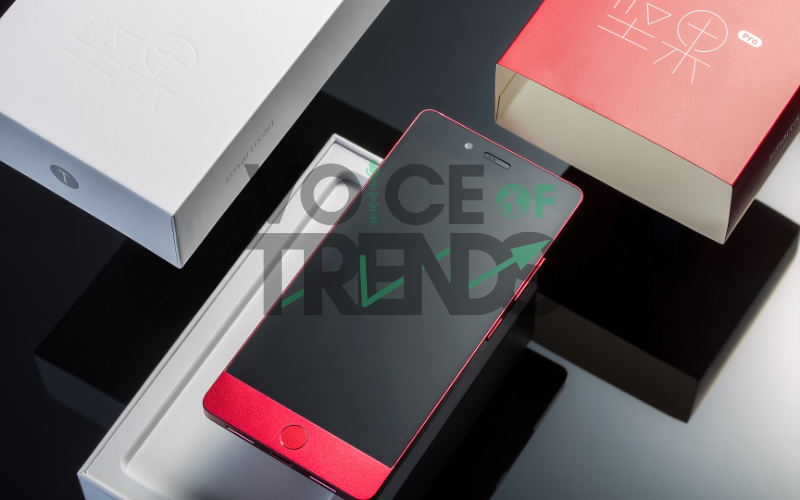Table of Contents
ToggleIntroduction
Choosing the right Android phone can be overwhelming with the plethora of options available in 2024. With advancements in technology, it’s crucial to understand what features and specifications matter most to you. Whether you prioritize camera quality, performance, or battery life, this guide will help you navigate the Android phone market and make an informed decision.
Key Considerations When Choosing an Android Phone
Budget and Pricing
Your budget plays a significant role in narrowing down your options. Android phones range from budget-friendly models to high-end flagships. Determine how much you are willing to spend and consider the long-term value of your investment.
Brand Reputation
Different brands offer varying levels of quality, support, and innovation. Brands like Samsung, Google, and OnePlus are known for their reliability and cutting-edge features. Research the reputation of the brands you are considering.
User Needs and Preferences
Identify your primary use cases. Are you an avid photographer, a mobile gamer, or someone who needs a phone for basic tasks? Your needs will influence the features that are most important to you.
Display and Screen Quality
Screen Size and Resolution
The display is a critical aspect of any smartphone. Consider the screen size that suits your preference—larger screens are great for media consumption, while smaller screens offer better portability. Resolution (Full HD, Quad HD) affects the sharpness and clarity of the display.
Display Technology: AMOLED vs LCD
AMOLED screens offer vibrant colors and deep blacks, while LCDs are generally more affordable and offer decent performance. Your choice depends on your preference for color accuracy and display quality.
Refresh Rate and Its Importance
Higher refresh rates (90Hz, 120Hz) provide smoother scrolling and better gaming experiences. If you prioritize fluid visuals, opt for phones with higher refresh rates.
Performance and Processor
Understanding Processors (Qualcomm, MediaTek, Exynos)
The processor, or chipset, determines the phone’s performance. Qualcomm’s Snapdragon, MediaTek’s Dimensity, and Samsung’s Exynos are popular options. Higher-end processors deliver better performance and efficiency.
RAM and Multitasking Capabilities
More RAM allows for smoother multitasking and better performance in demanding apps. Aim for at least 6GB of RAM for a balanced experience.
Gaming and Heavy Usage Performance
If you’re a gamer or use heavy applications, look for phones with powerful GPUs and gaming-specific features like enhanced cooling systems.
Camera Quality
Megapixels vs Sensor Quality
While megapixels are important, sensor quality and software optimization play a crucial role in camera performance. Look for reviews that focus on real-world camera usage.
Additional Features: Night Mode, AI Enhancements
Modern phones come with features like night mode, AI scene detection, and optical image stabilization. These features enhance your photography experience.
Video Recording Capabilities
Consider the phone’s video recording capabilities, such as 4K or 8K recording, frame rates, and stabilization options.
Battery Life and Charging
Battery Capacity
Larger batteries typically offer longer usage times. Look for phones with at least 4000mAh batteries for all-day performance.
Fast Charging and Wireless Charging
Fast charging can significantly reduce the time it takes to charge your phone. Wireless charging adds convenience, especially if you use a wireless charging pad.
Battery Optimization Features
Some phones come with software features that extend battery life, such as adaptive battery management and power-saving modes.
Software and User Interface
Stock Android vs Custom Skins (One UI, MIUI, etc.)
Stock Android provides a clean and straightforward experience, while custom skins offer additional features and customization options. Choose based on your preference for simplicity or additional functionalities.
Software Updates and Support
Regular software updates are crucial for security and new features. Opt for brands known for timely updates.
Pre-Installed Apps and Bloatware
Some phones come with pre-installed apps that you might not use. Check if these can be removed or disabled to free up storage and improve performance.
Storage Options
Internal Storage Capacities
Choose a phone with sufficient internal storage to meet your needs. 64GB is the minimum recommended, but 128GB or more is better for heavy users.
Expandable Storage and Cloud Solutions
Some phones offer expandable storage via microSD cards, while others rely on cloud storage solutions. Decide based on your storage requirements.
File Management and Performance
Efficient file management features can help you organize and access your data quickly. Look for phones with robust file management systems.
Connectivity and Network Support
5G Compatibility
5G is becoming more widespread, offering faster internet speeds and lower latency. Ensure your phone supports 5G if you want future-proof connectivity.
Wi-Fi and Bluetooth Versions
The latest Wi-Fi and Bluetooth versions (Wi-Fi 6, Bluetooth 5.2) offer better performance and connectivity options.
Other Connectivity Features (NFC, IR Blaster)
Features like NFC for contactless payments and IR blasters for remote control functionality can add convenience.
Build Quality and Design
Material and Durability (Glass, Metal, Plastic)
The build quality affects the phone’s durability and premium feel. Glass and metal designs are more premium, while plastic can be more durable and lightweight.
Water and Dust Resistance Ratings
IP ratings indicate the phone’s resistance to water and dust. Higher ratings (IP67, IP68) offer better protection.
Ergonomics and Design Aesthetics
Consider the phone’s design and how comfortable it is to hold and use. Ergonomic designs reduce strain during prolonged use.
Security Features
Fingerprint Scanners and Face Recognition
Biometric security features add convenience and enhance security. Look for fast and reliable fingerprint scanners or face recognition systems.
Software-Based Security (Knox, Google Play Protect)
Additional security features, like Samsung’s Knox or Google’s Play Protect, provide enhanced protection for your data.
Regular Security Updates
Ensure the phone receives regular security updates to protect against vulnerabilities and threats.
Unique Features and Innovations
Foldable Screens and Dual Displays
Foldable phones offer unique multitasking capabilities and portability. Dual displays can enhance productivity and media consumption.
Advanced AI Features
AI features improve camera performance, battery management, and overall user experience. Look for phones with integrated AI capabilities.
Integration with Other Devices (Smart Home, Wearables)
Seamless integration with smart home devices and wearables enhances the overall user experience. Consider phones that support extensive ecosystems.
Brand-Specific Features
Samsung: Unique Offerings and Ecosystem
Samsung phones offer features like DeX mode, S Pen support, and a robust ecosystem of connected devices.
Google Pixel: Stock Android and Camera Performance
Google Pixel phones are known for their clean software experience and exceptional camera quality, thanks to advanced computational photography.
OnePlus: Fast Performance and Clean UI
OnePlus phones offer a near-stock Android experience with fast performance, making them a favorite among enthusiasts.
Value for Money
Balancing Features and Price
Finding the right balance between features and price ensures you get the best value for your money. Don’t overspend on features you won’t use.
Budget-Friendly Options with High-End Specs
Some budget-friendly phones offer high-end specs at a lower price. Research these options to maximize your investment.
Comparison of Mid-Range and Flagship Models
Mid-range phones often provide excellent performance without the premium price tag of flagship models. Compare features and decide based on your needs.
Conclusion
In conclusion, selecting the best Android phone in 2024 involves considering a range of factors, including performance, camera quality, battery life, and unique features. By understanding your needs and preferences, you can make an informed decision and choose a phone that suits your lifestyle and budget.
FAQs
How often should I upgrade my Android phone?
Typically, upgrading every 2-3 years is sufficient to keep up with technological advancements and software updates.
What are the best budget Android phones in 2024?
Some of the best budget Android phones in 2024 include the Xiaomi Redmi Note series, Samsung Galaxy A series, and Motorola Moto G series.
How important is 5G in 2024?
5G is becoming increasingly important for faster internet speeds and improved connectivity. It is recommended to choose a 5G-compatible phone for future-proofing.
Can software updates improve my phone’s performance?
Yes, software updates can enhance performance, fix bugs, and introduce new features, improving the overall user experience.
What should I do with my old Android phone?
You can recycle it, trade it in for a discount on a new phone, or repurpose it as a secondary device or for smart home control.




















